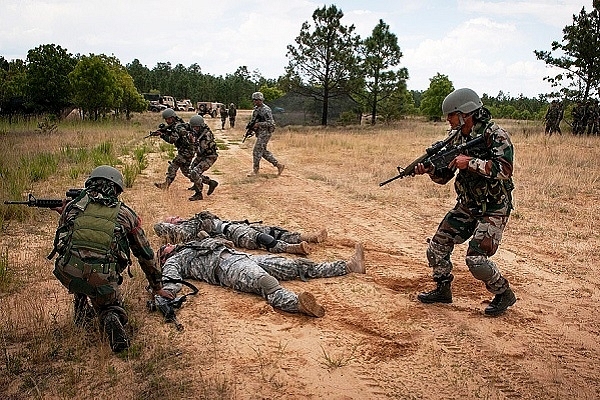
Indian Army Close To Deploying Its First Integrated Battle Groups, Here’s Why The Lethal Units Are So Important
The Indian Army is close to implementing its first integrated battle groups (IBG), a cog in the large wheel of transformation which the army hopes to carry out in the coming years, The Hindu has reported.
These IBGs are being introduced to give Indian Army the capability of swiftly hitting back at the enemy in light of hostilities. Designed to be agile and self-sufficient, the brigade sized IBGs - with an expected strength of 5,000 personnel would be capable of mobilising within just 12 to 48 hours.
The Army which has already tested this concept via the 9 Corps and is expected to carry out the restructuring based on the feedback it receives post the training exercises. It is then expected to seek an approval from the Indian government for the IBGs.
In total the army is expected to raise three IBGs in the near future which will combine various army components necessary to fight a war like infantry, armour, artillery, engineers, logistics and support units, equipped with heavy firepower.
One of the IBGs would be used for offensive roles including potential cross border strikes, as a result of which they will be more tank intensive for effective thrusts. Another IBG would be designed for a defensive role and would be dominated by infantries to hold ground.
These IBGs are expected to give India an edge along the Pakistan border and similar units would be mobilised near the China border in the future. The Western IBG will have significantly different equipment than the Eastern ones along with varied training and attack tactics. No two IBGs would be the same and every battle group would be raised based on different tactics keeping in mind the “Threat, Terrain and Task”.
Every IBG would have an unit strength of around 5,000 personnel led by a major general as opposed to conventional brigades which comprises of three to four battalions with 800 troops each.
The main motive of the IBG with a strike role would be to ensure a sharp and swift response “with the aim to destroy the adversary’s centre of gravity and secure spatial gains”.
This IBG strategy is said to be part of Indian Army’s “cold start doctrine” to prevent an “Operation Parakram” like scenario when troop mobilisation along the border took almost a month after the 2001 Parliamentary attack.
This blunted India’s strategy as by then Pakistan had already shored up its defences and US had exerted its pressure to avoid a cross-border conflict.